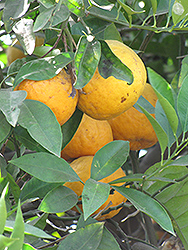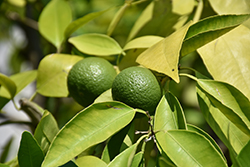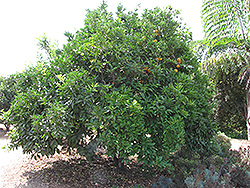Fri & Sat 8am - 8pm
Sun 8am - 7pm
Anytown, USA 12345
fax: 261.787.0463
e-mail: info@successgc.com


Plant Finder

Height: 15 feet
Spread: 20 feet
Sunlight:
![]()
![]()
Hardiness Zone: 8b
Other Names: Royal Mandarin
Description:
An attractive tree that bears medium-sized, seedy, orange fruit with a pleasant tart flavor that is best suited for juicing; fruit will hang on the tree for a long period; a nice landscape plant, or large screen; protect from frost; great for containers
Edible Qualities
Tangor is a small tree that is commonly grown for its edible qualities. It produces orange round fruit with hints of yellow which are usually ready for picking from mid winter to early spring. The seedlessfruits have a tart taste and a juicy texture.
The fruit are most often used in the following ways:
- Cooking
- Preserves
- Juice-Making
- Sauces
Features & Attributes
Tangor features showy clusters of fragrant white star-shaped flowers with buttery yellow eyes at the ends of the branches from early to mid spring. It has attractive dark green foliage with grayish green undersides. The glossy pointy leaves are highly ornamental and remain dark green throughout the winter. It features an abundance of magnificent orange berries with yellow hints from late fall to early spring.
This is a multi-stemmed evergreen tree with an upright spreading habit of growth. Its average texture blends into the landscape, but can be balanced by one or two finer or coarser trees or shrubs for an effective composition. This plant will require occasional maintenance and upkeep, and is best pruned in late winter once the threat of extreme cold has passed. It is a good choice for attracting birds, bees and butterflies to your yard. Gardeners should be aware of the following characteristic(s) that may warrant special consideration;
- Insects
Aside from its primary use as an edible, Tangor is sutiable for the following landscape applications;
- Accent
- Hedges/Screening
- Orchard/Edible Landscaping
- Container Planting
Planting & Growing
Tangor will grow to be about 15 feet tall at maturity, with a spread of 20 feet. It has a low canopy with a typical clearance of 2 feet from the ground, and is suitable for planting under power lines. It grows at a medium rate, and under ideal conditions can be expected to live for 50 years or more.
This plant is typically grown in a designated edibles garden. It does best in full sun to partial shade. It does best in average to evenly moist conditions, but will not tolerate standing water. It is not particular as to soil type or pH. It is somewhat tolerant of urban pollution. Consider applying a thick mulch around the root zone over the growing season to conserve soil moisture. This particular variety is an interspecific hybrid.
Tangor is a good choice for the edible garden, but it is also well-suited for use in outdoor pots and containers. Its large size and upright habit of growth lend it for use as a solitary accent, or in a composition surrounded by smaller plants around the base and those that spill over the edges. It is even sizeable enough that it can be grown alone in a suitable container. Note that when grown in a container, it may not perform exactly as indicated on the tag - this is to be expected. Also note that when growing plants in outdoor containers and baskets, they may require more frequent waterings than they would in the yard or garden.


